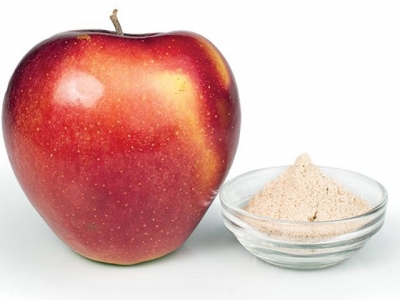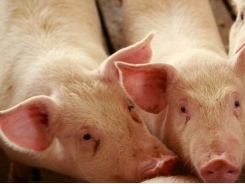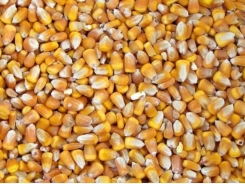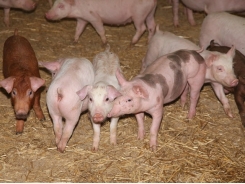Piglet gut health promoted by pectin

Pectin is a new feed additive used as a functional fiber to improve gut health in weaned pigs.
Apples are a rich source of pectin. | Photo: Deyangeorgiev, Dreamstime
Diarrhea is a reoccurring problem in young animals, and even under good conditions farms will lose piglets during rearing. Plant-derived feed components containing high fiber content are well-discussed in animal husbandry because of their potential to prevent diarrhea. The feed industry is focusing on their use more due to their potential to stabilize the intestine and their ability to prevent the application of additional therapeutic treatment in case of diarrhea.
These plant-derived fiber components are mainly non-starch polysaccharides (NSP). Often regarded as detrimental for efficient digestibilities of feeds, there are some NSP that deserve a closer look. One of these candidates is pectin, known as a gelling agent in food applications. Industrially extracted and purified pectins offer a phytogenic tool for stabilizing the gastrointestinal tract in piglets. This article provides a small overview about these pectins, their effects on digestive stability and their advantages for piglets in case of diarrhea.
Why should we talk about extracted pectin?
Pectin is a non-starch polysaccharide mainly extracted from apple pomace, citrus peels and sugar beet pulp. Therefore an acid water-based extraction is performed in which pectin, sugars and secondary plant compounds are extracted from the cell walls of the raw material. After that, the pectin solution is separated from the insoluble fraction, and the pectin is isolated via precipitation with alcohol.
Pectin is a non-starch polysaccharide mainly extracted from apple pomace, citrus peels and sugar beet pulp.
The linear chain of the pectin macromolecule is mainly made up of galacturonic acid units linked together via 1.4-α-glycosidic bonds. Therefore, the polygalacturonic acid content is an important factor to consider when different types of pectin are evaluated for feed and food applications. In its native form it is usually called protopectin, and together with cellulose and hemicellulose, pectin forms a very strong structure, the cell wall matrix. No doubt, the bioavailability of this tightly bound protopectin is limited for monogastric animals. Pectin, whether native or extracted, is non-degradable by any monogastric enzyme, but fermentable by microorganisms, mainly bacteria. Therefore the bioavailability depends on the bacterial composition and concentration in the intestines.
A matured bacterial microbiome, as in adult pigs or horses, is able to degrade and metabolize a lot of different chemical bonds and, as a consequence, different plant derived fibers, too. It is hard to believe that the bacterial community of young and very young animals, which is still under development, can handle such a complex structure. This question is enforced especially in cases when digestive disorders are already prevalent in young animals.
Why are extracted pectins good for piglets?
We all know that weaning is one of the most critical phases for piglets concerning diarrhea.
In wild life, young wild boars are weaned after 13 to 17 weeks and therefore have a prolonged time to cope with the change from liquid milk feed to solid plant-based feed. Under current farming conditions, our piglets are weaned on an average of 28 days. With the sudden change in feeding behavior, we try to attenuate by elaborate livestock management systems where feeding strategy plays a crucial role to prevent intestinal disorders. For example, early triggering of the gastrointestinal tract with solid feed containing plant derived fiber may be helpful for adaption to the new feed during weaning.
The main risk of diarrhea is a massive loss of water along with electrolytes. Pectin as a hydrocolloid binds water physically. In case of diarrhea, the passage rate of the chyme through the gastrointestinal tract will be reduced and the piglet will get more time for digestion. But the application of the different plant fibers is often discussed controversially. Some authors point out that plant fiber components with high water binding capacity could only mask the effect of diarrhea and create the illusion of feces with better quality. In contrast to non-fermentable fiber sources, these are not established concerns for extracted pectin, as pectin is fermented up to 92 percent in the large intestine. During this fermentation process, pectin is degraded and bound water will be gradually released in the hindgut and is then resorbable for the piglet. Without this resorption, the feces would turn watery again, and there would be no masking effect. In a recommended dosage less than 2.5 percent pectin in the feed, pectin will support the piglets’ intestinal water management.
Furthermore, fermentation of pectin leads also to the built up of short chain fatty acids (SCFA), mainly butyrate, propionate and acetate. These SCFA have a proven effect on the development of the juvenile epithelium.
Due to these effects, pectin increases the bacterial biodiversity in the hind gut, also supporting its beneficial maturation. Enhancing the bacterial biodiversity minimizes the risk of an open gap arising for the facultative pathogen microorganisms to adhere on the epithelial cells in the intestine. An earlier developed bacterial microbiome balances the microflora via competitive exclusion and helps to enhance immune system in the intestine; as a result, the incidence of diarrheas decreases. With pectins, feed producers and pig producing farmers get a dietetic phytogenic feeding tool that offers immediate relief in case of digestive disorders in piglet and also supports the digestive maturation in young animals if applied as prebiotic feed substance.
Increasing intestinal stability in piglets
Pectin is a suitable plant-extracted natural feeding tool for increasing intestinal stability in piglets. Applied either curative or preventive in critical phases of rearing it supports the also maturation of the gastrointestinal tract, too.
Có thể bạn quan tâm
Phần mềm

Phối trộn thức ăn chăn nuôi

Pha dung dịch thủy canh

Định mức cho tôm ăn

Phối trộn phân bón NPK

Xác định tỷ lệ tôm sống

Chuyển đổi đơn vị phân bón

Xác định công suất sục khí

Chuyển đổi đơn vị tôm

Tính diện tích nhà kính

Tính thể tích ao hồ




 Antibiotic usage trends promote new ways to raise…
Antibiotic usage trends promote new ways to raise…  Denmark sees progress in R&D on zinc alternatives…
Denmark sees progress in R&D on zinc alternatives…